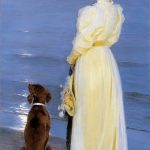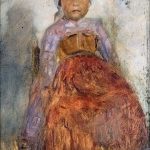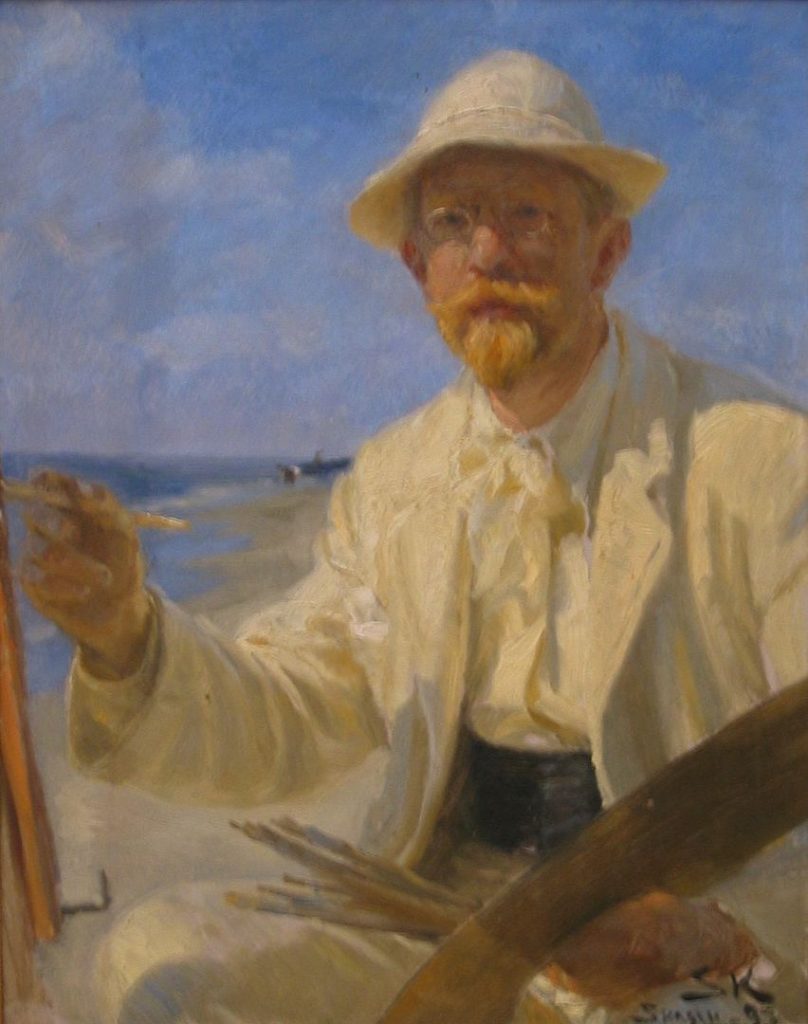
Peder Severin Krøyer, born on July 23, 1851, in Stavanger, Norway, and passing on November 21, 1909, in Skagen, Denmark, was a pivotal figure in Scandinavian art, particularly known for his role in the Skagen Painters, a group of Scandinavian artists who gathered each summer in the northernmost part of Denmark.
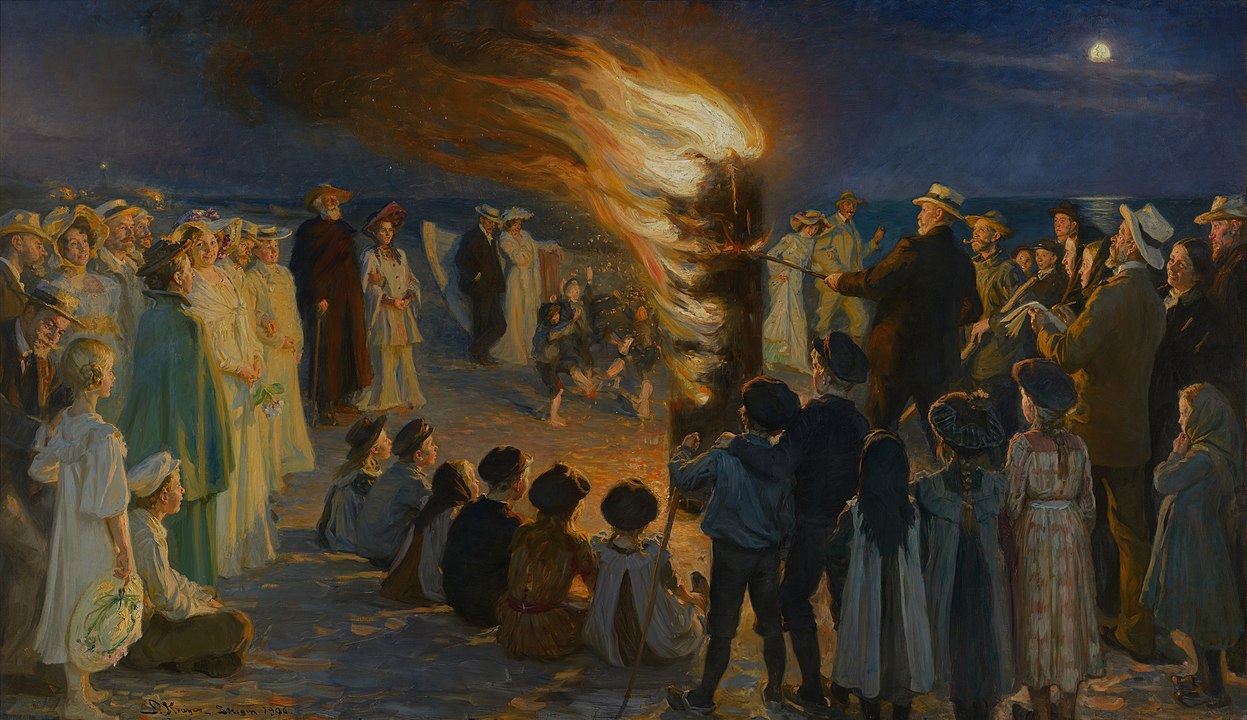
Krøyer’s work, characterized by its luminous depiction of the sea, the beach, and local life, combines technical mastery with a profound sensitivity to natural light, making him one of the most celebrated and beloved figures in Danish art history. This biography explores the life, career, and legacy of Peder Severin Krøyer, whose paintings captured the unique beauty and light of Skagen, contributing significantly to the art of the late 19th and early 20th centuries.
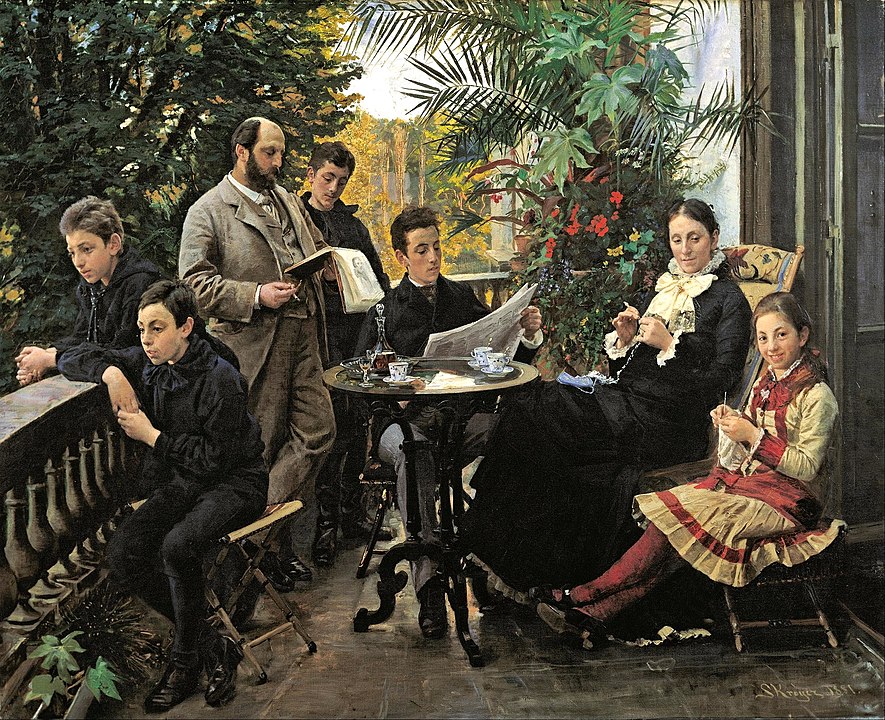
Krøyer was born to a Norwegian engineer father and a mother who died shortly after his birth. He was raised in Copenhagen by a foster family and showed an early talent for art. At the age of 14, he entered the Royal Danish Academy of Fine Arts, where he studied traditional academic painting.
Nature’s Touch
Krøyer’s early work was marked by a naturalistic approach, influenced by his studies and travels in Europe, where he was exposed to the work of contemporary French artists. His travels, particularly to Paris, introduced him to Impressionism and the modern movements that were beginning to take shape, which would have a profound influence on his style and approach to painting.
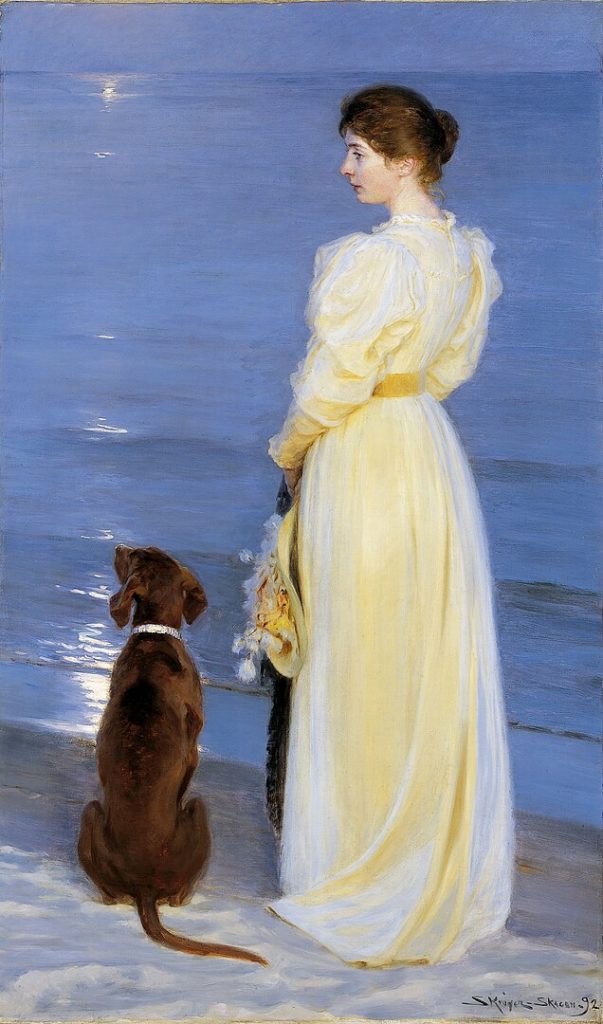
In the early 1880s, Krøyer settled in Skagen, a fishing village that attracted a community of artists drawn by its extraordinary light and landscapes. Here, Krøyer’s work underwent a transformation. He began to experiment with the effects of light, especially during the “blue hour” at twilight, which became a signature element of his work. His paintings from this period, such as “Summer Evening on Skagen’s Beach. The Artist and His Wife” (1899), are celebrated for their evocative depiction of light and atmosphere, capturing the transient moments of twilight with a remarkable sensitivity.
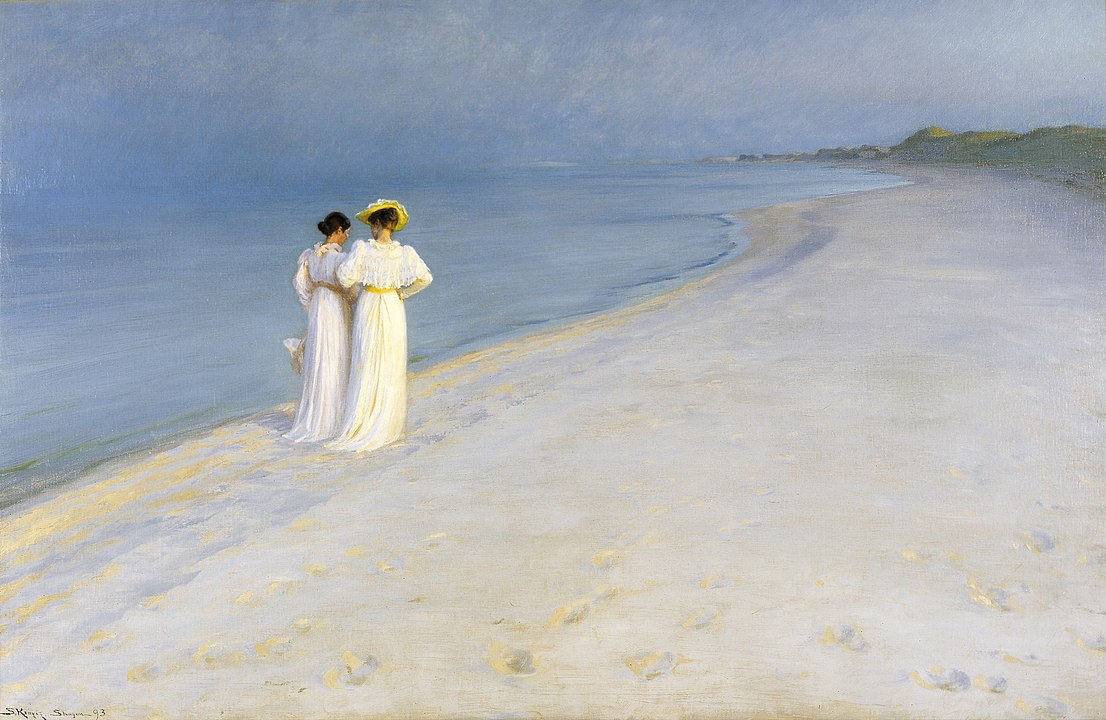
Krøyer’s contribution to the Skagen Painters was not only in his art but also in fostering a sense of community among the artists. He was a central figure in the group, known for his charismatic personality and leadership. The gatherings of the Skagen Painters were not just social; they were also a forum for discussion and exchange of ideas, deeply influencing the development of Scandinavian art during this period.
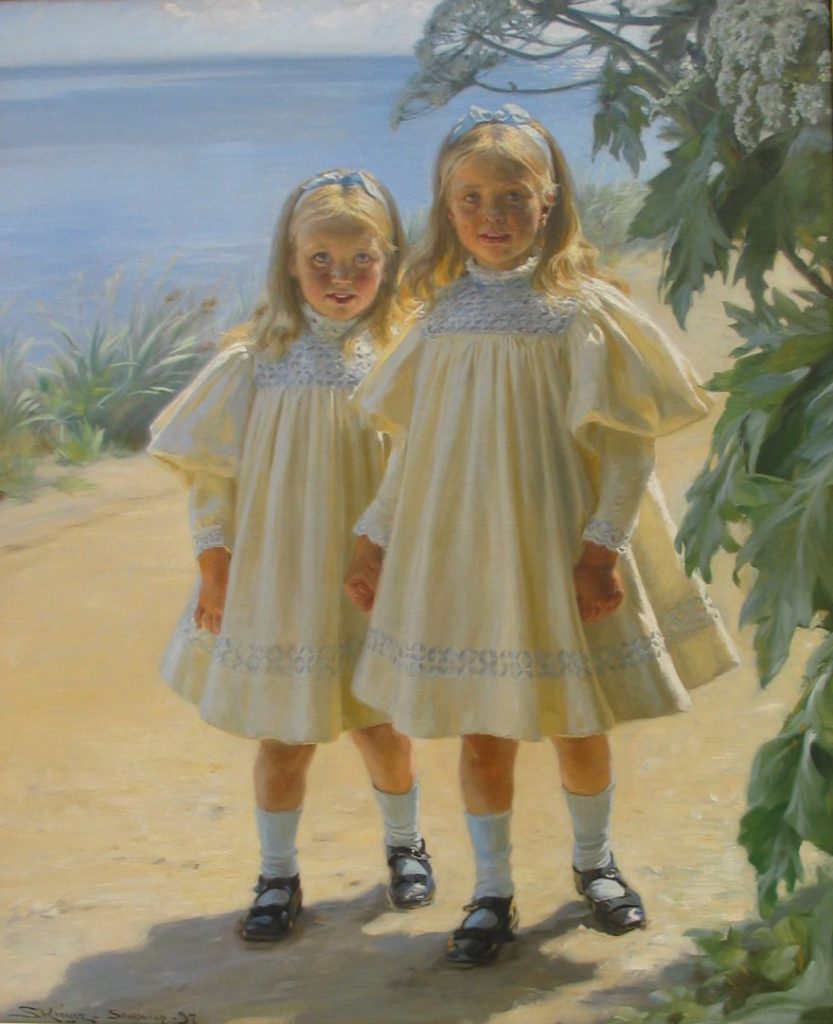
Despite his success and popularity, Krøyer’s life was marked by personal challenges, including his struggles with mental illness in his later years. His health issues affected his work, but he continued to paint, capturing the landscapes and people of Skagen with a diminishing frequency but enduring affection.
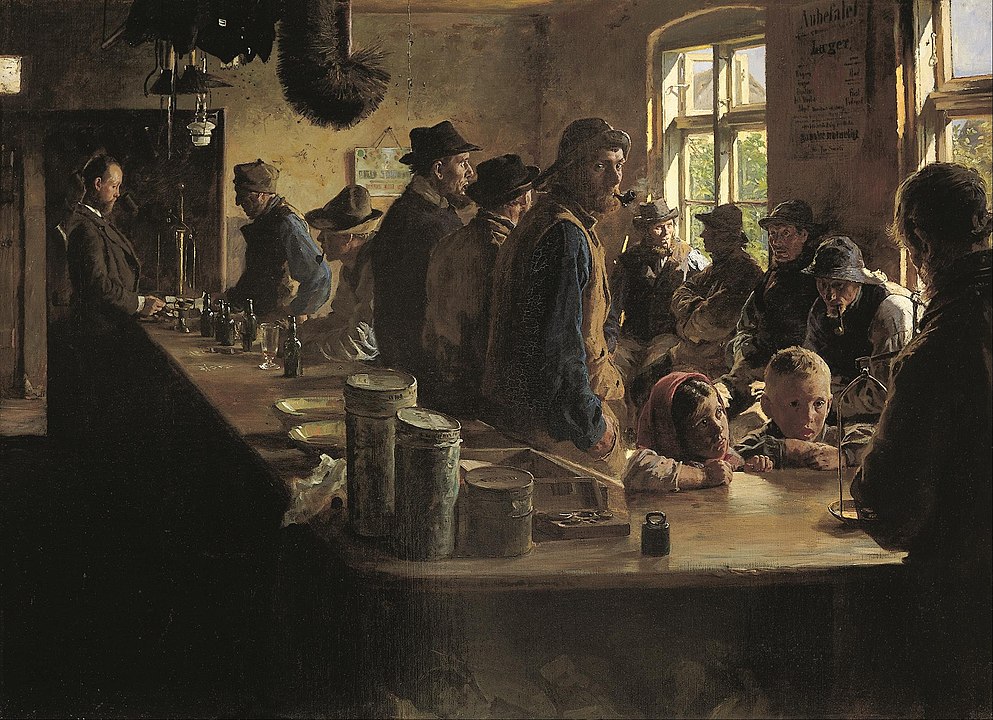
Krøyer’s legacy is closely tied to the Skagen Painters, whose work collectively represents one of the most important chapters in Scandinavian art history. His paintings are celebrated for their technical skill, their innovative use of light, and their poetic evocation of the Danish landscape and seascape. Krøyer’s art transcends its regional context, contributing to the broader narrative of European art at the turn of the century.
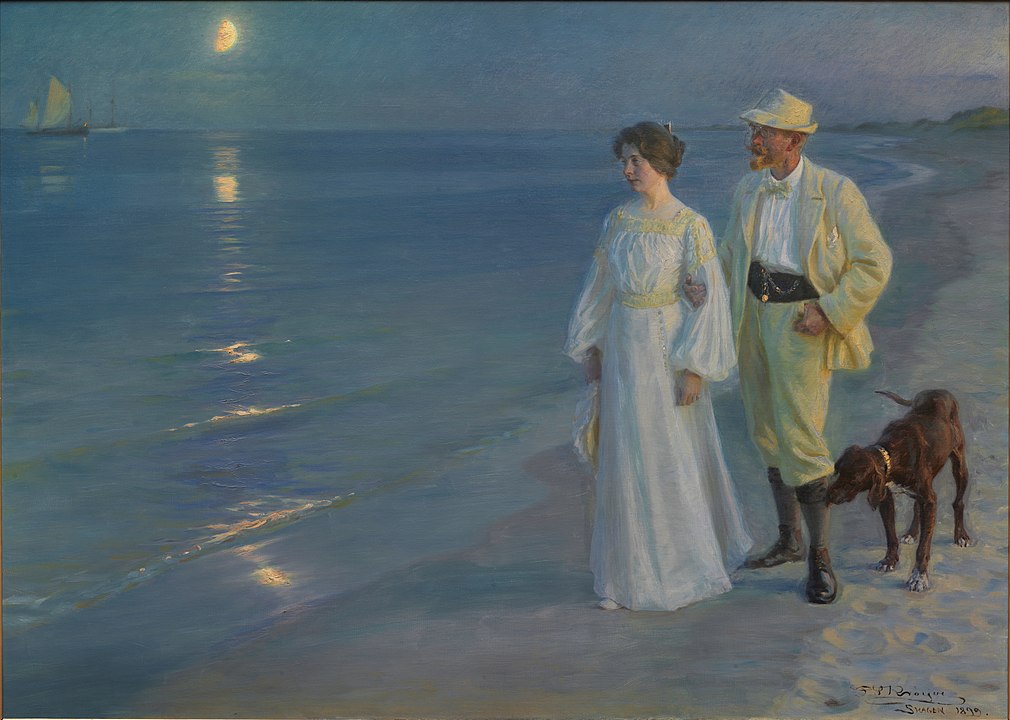
Today, P.S. Krøyer is honored for his artistic achievements and his role in documenting the unique environment of Skagen. His work is held in major collections both in Denmark and internationally, and the Skagen Museum, dedicated to the group of artists he led, houses many of his most significant paintings.
Scandinavian Scene
Krøyer’s influence extends beyond his contributions to painting; he played a critical role in the development of a distinctive Scandinavian art scene that drew from international movements while deeply rooted in the local landscape and culture.
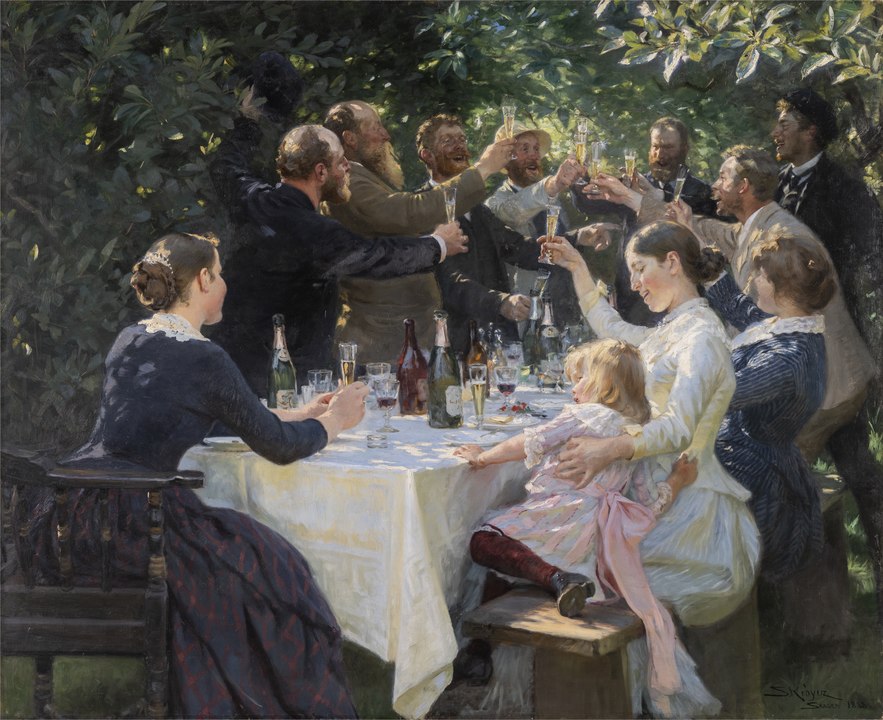
In conclusion, Peder Severin Krøyer’s art captures the fleeting moments of light and life with a sensitivity and skill that continue to enchant viewers. His legacy as a painter and a central figure in the Skagen Painters group has cemented his place in the annals of art history, not only as a master of Danish art but also as a significant contributor to the broader development of modern painting. Through his exploration of light and atmosphere, Krøyer not only depicted the beauty of Skagen but also contributed to the understanding of light and color in art, making him a pivotal figure in the transition to modern artistic expressions in the late 19th and early 20th centuries.


